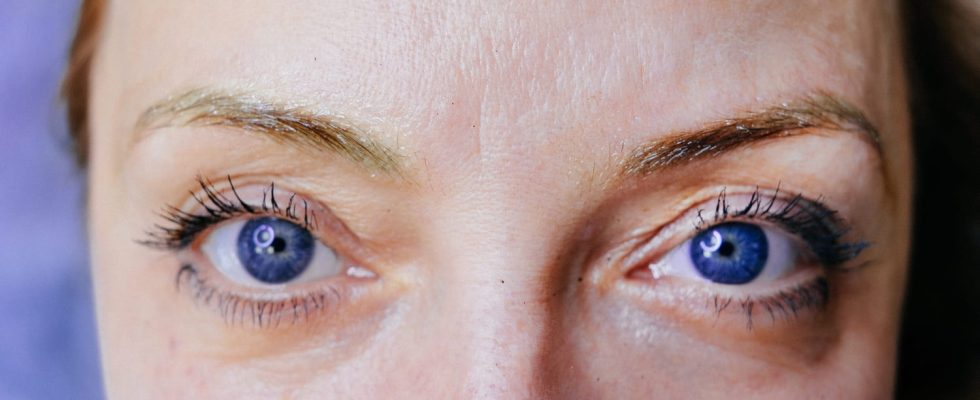A stye is a bacterial infection characterized by a white pimple that forms on the edge of the eyelid. Causes, difference with the chalazion, treatment to make it go away: the essentials to know about the stye.
The stye is a kind of eyelash boil causing a small painful swelling of the free edge of the eyelid, at the implantation of the eyelashes.
The stye is accompanied by a small white pimple (pus) at the base of an eyelash. A local pain, sometimes sharpoccurring quickly to the formation of the boil (especially to the touch) may be present with tearing, or discomfort in the eye.
This is a mild and temporary infection that usually lasts 5 days.
Styes are not not very contagiousbecause the bacterium who caused the infection does not survive long outdoors. However, they can to be transmitted from one eye to the other (or to a third person) if you rub your eyes with unwashed hands, for example.
A stye is often confused with another eye problem called a chalazion. If the two are visually similar, the chalazion (infection of one of the Meibomian glands contained in the cartilage of the eyelids) lasts longer and causes no pain.
The stye results from a infection localized on the sebaceous gland annexed to an eyelash by a germ of the type Staphylococcus aureus. This will then swell until it forms a boil. In people with diabetes, acne or stress and fatigue with a weakened immune system, styes have a tendency chronic. This is why screening for diabetes is often recommended in case of frequent infection. There presence of blepharitis (inflammation of the skin covering the eyelids), lack of hygiene, air conditionerwind, wearing contact lenses and makeup are risk factors for styes.
Most of the time, styes are harmless or inconsequential. However, it can happen that they get worse or more complicated. If the situation has not improved after 48 hours or has worsened, consultation with the attending physician or an ophthalmologist is required. In the event of a recurrence of a stye, it is important to look for more indirect causes, such as diabetes. In effect, the occurrence of recurrent styes may be related to an underlying condition more serious, responsible for the weakening of the immune system.
The treatment of a stye requires a eye drops or a ointment teaming up antibiotic and corticosteroid and the application of a wet compress (hot water) 3 to 4 times a day, to accelerate the flow of pus. In the event of resistance to the first-line treatment, consideration may be given to incision at the free edge to drain the pus. It is performed under local anesthesia by an ophthalmologist.
It is recommended do not touch the stye, pierce it or rub your eyelids with your fingers, which could promote the spread of infection. If you feel pain, take painkillers (paracetamol or nonsteroidal anti-inflammatory drugs), avoid wearing makeupuntil the stye heals and do not wear contact lenses until the problem is resolved.
